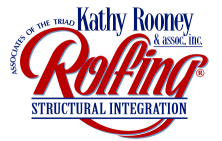Rolfing® structural integration
If you live in a body and use it, life will deliver a few dents and dings now and then. That’s why we’re here to help maintain your body with Rolfing ® structural integration. Your body is a complex system adapted to Earth’s downward pull. But when muscles, bones, and ligaments are displaced by injury or stress, gravity is your worst enemy. Pain, fatigue, and even mood disorders can result .
With Rolfing ® structural integration, your body is ready for all the challenges of life. And gravity is your best friend.
Pain Relief ! Testimonials
Copyright © RolfingAssociates.com 2002
Life in relationship to a Large Planet
“Aging is nothing but a symptom of your losing fight with gravity.” Dr. Ida P. Rolf
Look at the history of your body and its current condition. What’s the best shape you were ever in? Is it true that you can’t get better than that because you are older? Have the slings and arrows of outrageous fortune left your body feeling like an old dartboard? What are you putting up with or ignoring? What would make you happy with your body? Are you hiding it under a layer of fat and telling yourself that if you just lose weight you’ll have the same body that you had last time you were thin?
Having a body that can run or dance or work and play hard (or whatever you ask of it), is something most people want. In the aging process, gravity is compacting our structures and shortening our bodies. It doesn’t look or feel good when there’s no room for our bones and discs to peacefully exist in the soft connective tissue matrix of fascia and muscles. Having a body that is graceful, fluid and pain free is the goal of Rolfing® structural integration.
Fascia: the Organ of Shape
Fascia is a form of connective tissue. If you threw a cat in a bucket of magic solution that would dissolve all of its cells, when you fished out what was left, you would be able to recognize it as a cat, because it would be shaped like a cat.[i] Connective tissue is a primarily non-cellular matrix that gives you your shape and organizes your cells into functional units. Conversely, if you threw another cat in a bucket of magic solution that would dissolve all of its connective tissue, you would have to use a sieve to remove the cells that would be left in the bucket. Brain cells would be mixed with kidney cells, mixed with muscle cells, with liver cells, bone cells and others. Even if the cells were still alive there would be no organized relationship between them and thus no function.
Connective tissue tightens and shortens in response to trauma, repetitive stress and lack of movement. The nerves of your body are imbedded in the fascia, so tight and unyielding connective tissue can be the source of pain because the nerve endings are affected. Rolfers make a lifelong study of interacting with connective tissue and fascia to restore it to the condition of health that existed earlier in your life. We can and do take your connective tissue back to a more youthful and healthy state.
History Lives on in your Body
How many injuries have you had? What kind of impact injuries have you sustained? An impact injury is the sudden decrease in acceleration caused when the human structure hits a solid object. Automobile accidents that left you with no bleeding and no broken bones did not necessarily leave you unaffected. Falls are impact injuries. Having an object hit you — like getting your hand jammed catching a ball is an impact injury.
Every impact injury generates a compensatory pattern that is less balanced in the gravitational field and less efficient than before. Every trauma produces some effect on your connective tissue network. The original incident may be forgotten but it shows up as that stiffness in an ankle, that tension in the neck, nagging pain between the shoulder blades, an aching lower back. Rolfers work in the dance between relieving symptoms and balancing the whole structure. The study of structural integration generates their ability to see and create this order in highly effective and positive ways.
A Typical Session
After a thorough evaluation of your structure and movement patterns, the Rolfer will skillfully loosen and lengthen fascial sheaths surrounding specific muscles and joints with her hands. The practitioner will work with you and your level of comfort to achieve the best results. The process is one of exploration, awareness, education and change. Sensations in the area being worked vary from pleasurable warmth to momentary discomfort. How you will feel during the Rolfing session depends on several factors such as injuries to the area, or tension caused by chronic stress. Chronic pain often disappears immediately after the session or soon after the series.
The Origin of Rolfing® Structural Integration
Dr. Ida P. Rolf, (Ph.D. Biochemistry 1920 Columbia University) originated structural integration during the thirties while she was dealing with family health issues that were not responding to traditional medical care. By the 1950’s she had codified her work into the basic ten series that is still used today. She taught her work in the medical community for over a decade. In 1972 she established The Rolf Institute® to teach and continue her work and registered the brand name Rolfing®. Since her death in 1979, several teachers have left The Rolf Institute® to start their own schools including a major split in 1988, where four of her original teachers left to form the Guild for Structural Integration. Both The Rolf Institute® and GSI certify practitioners of structural integration.
[i] Varela F. J., Frenk S., The organ of form: towards a theory of biological shape. Journal of Social Biology and Structure, 10: 73 – 83, 1987.
